The world of art is filled with talented artists who push the boundaries of creativity, blending emotions and aesthetics. One such artist is a sculptor who has embarked on a journey from New York to Carrara. His relationship with art began in his childhood, influenced by the sculptures of ancient Greece and Rome, leading him to marble. Eventually, he established his career in the renowned city of Carrara, Italy. With his works, this sculptor aims to offer viewers profound emotions and aesthetic experiences. Here is the inspiring story of a talented sculptor who shares his passion for sculpture and the challenges he has faced on this journey.
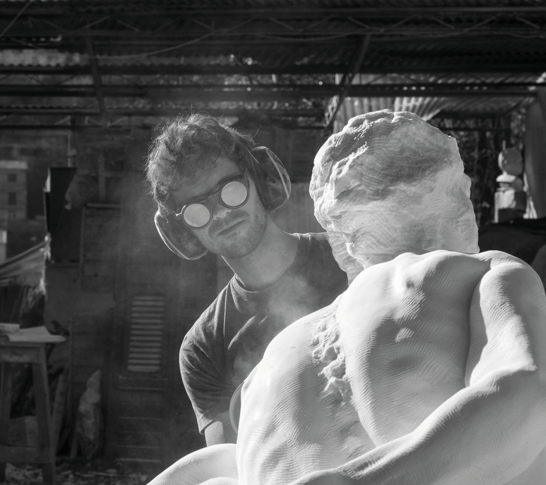
Could you briefly tell our readers about yourself?
I am a sculptor originally from New York, and for the past eight years, I have been living and working in Carrara, Italy.
How did you start your career as a sculptor? When and how did you decide to become interested in art?
I was interested in art from a young age, always painting and drawing, but when it came time to go to college I decided to study art history. It wasn’t until I did a study abroad (Erasmus) in Rome that I really saw sculpture for the first time, in particular, the stone sculptures of ancient Greece and Rome as well as from the Renaissance. It became so clear in my head what I wanted to do even before I ever touched a hammer and chisel. I returned to America where I changed schools and studied sculpture, trying a lot of different materials and techniques, but always returning to marble. After a few years of working in stone in New York, I moved to Carrara Italy, where I could have the space, time and material to really give my life over to this practice.
What emotional or aesthetic messages do you aim to convey in your artistic works? What kind of reactions do you hope to get from the audience?
-I primarily make work for myself, searching for meaning and life in the work, never quite sure where I’m going or when I’ll be finished. Art is such a personal endeavor, but when it is finished, it’s also a powerful language of communication. Art transverses time, culture and language. It is such a basic human endeavor, and in that sense, even though I make art for myself, I do hope for it to speak to the audience. I can’t dictate what people will feel, but I do hope people feel something human, something personal, something emotional. I am also happy when people want to touch my sculptures. There is something very tactile about my sculpture, you can see the scars and marks from my hand left by the angle grinder, the chisel or sandpaper.
I always try to use as much of the block of marble as possible so you will often see yellow iron oxide on the edges of my sculptures. I like to leave part of this outer edge of the block even in the final sculpture. It reveals a history of the stone which is quite interesting.
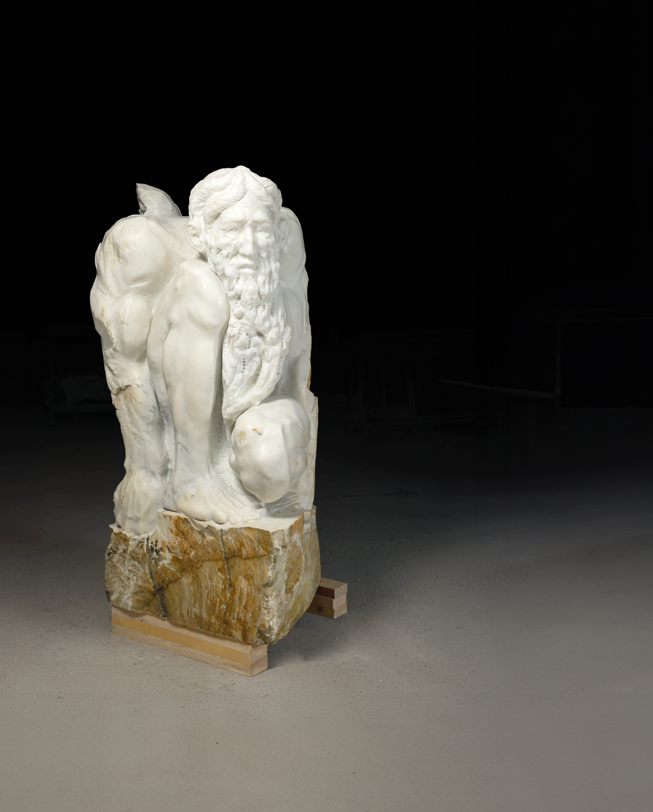
What do you pay attention to when choosing the marble you use in your sculptures? Which marble do you prefer and why?
-When I first moved to Italy, I had no idea about the variety or marble that was available to me. I was still learning how to carve and I wanted to try any stone that I could get my hands on but I was drawn to white marble. The more you work in marble, you develop an intuitive sense of any cracks that might be in it or the direction of the grain and how the stone will react under the pressure of the chisel. I eventually found my perfect stone which seems to be a mix between Calacatta and Statuario. It is white with a warm yellow hue and has an incredibly fine grain which makes it almost glass like and always has lots of cracks in it because of the immense pressure it was under. It is difficult to find a large block because of all of the cracks but I love the odd shapes it comes in and I work with the cracks in my sculptures, allowing the mountain to intervene in the shape of the sculpture as much as my hand.
What are the biggest challenges you face when working with marble and what strategies do you use to overcome these challenges?
The biggest challenge is the difficulty of moving such large sculptures. I try not to think about it when making my work because I don’t want practical considerations to hinder what I want to make creatively and I have the equipment available to move large work. The trick is convincing others, i.e. galleries and collectors, to deal with these considerations.
Which projects and goals in your artistic journey excite you? What are your plans for the near future?
I am about to start a new large, two and half meter block where I intend to make another figure but pushing the boundaries of abstraction more. Because I work in a direct carving method, I never know exactly how it will turn out. It’s also a slower process and I can generally only complete one large work and a hand full of medium to smaller works in a year. I have a full summer planned with lots of projects in the works.
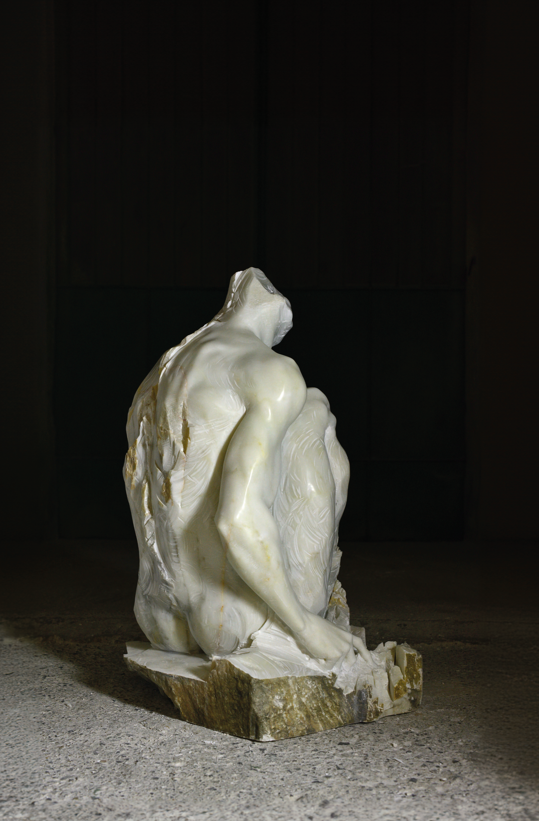
Can you share the names and characteristics of a few of your favorite projects?
I am just finishing a large 800 kg sculpture in this Calacatta marble that I described. It is a beautiful translucent, yellow/white marble that has lots of cracks in it, including a strong crack running right through the middle of it horizontally. For me, the cracks add character and with this piece, add to the meaning of the work. It is a sculpture of a female figure representing the ancient mesopotamian God of Chaos, Tiamat. In her story, she was killed and split in two, from which the heavens and the earth were made. I am organizing an exhibition with this sculpture and a few others around this theme of creation, particularly as it relates to ancient theology.
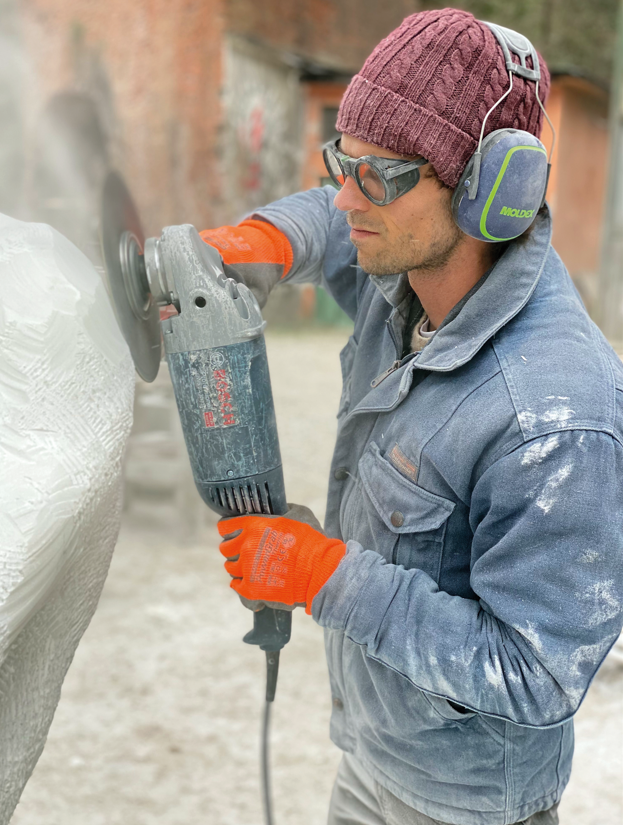






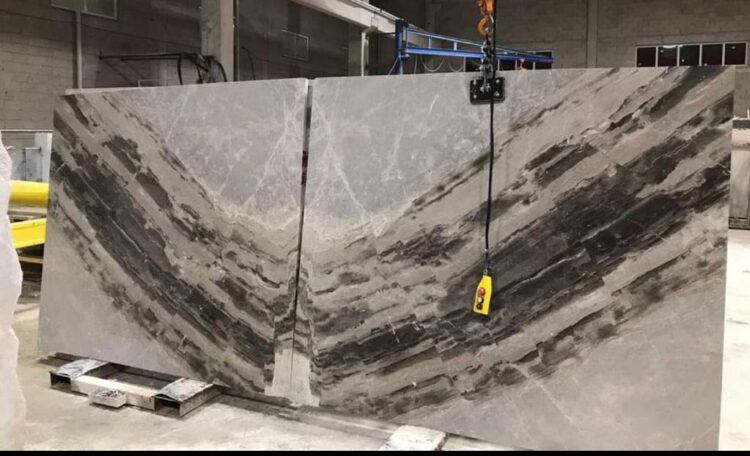
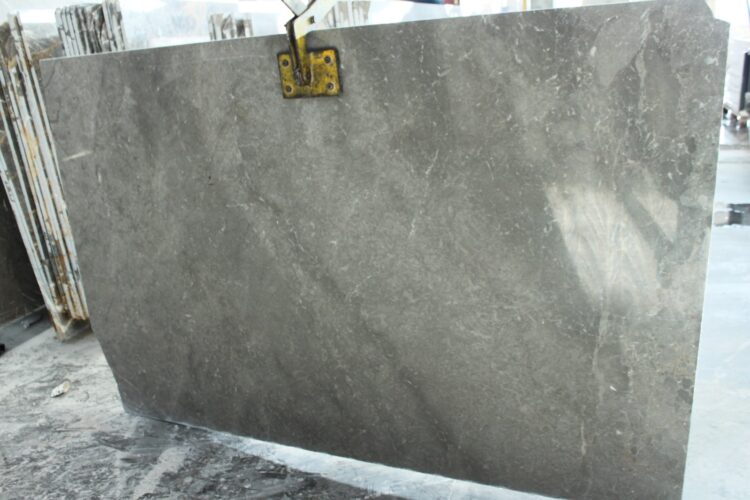













 +90 532 585 51 95
+90 532 585 51 95 +90 532 585 51 95
+90 532 585 51 95